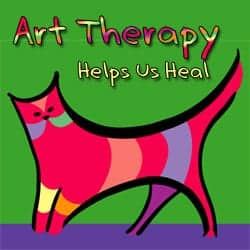 When disaster has struck, we need a way to express our feelings and get the strength to move on. It doesn’t have to be the perfect storm that leaves us homeless. It can be serious illness, the death of a loved one or being laid off from a life-long career. The most natural way to express our emotions is through art.
When disaster has struck, we need a way to express our feelings and get the strength to move on. It doesn’t have to be the perfect storm that leaves us homeless. It can be serious illness, the death of a loved one or being laid off from a life-long career. The most natural way to express our emotions is through art.
I have been painting for years, so I know first-hand how therapeutic creating images from the heart can be. I’ve heard a lot of women say, “Oh, I can’t even draw a straight line.” Or “I’m not creative.” When you’re faced with an event so traumatic that you can’t think of what to do, you need a way to express how you feel. Since art is a natural form of expression, it’s a wonderful release in a traumatic situation. When we allow our thoughts and feelings to flow from us in an unconscious way, we create images from our heart.
Children Are Natural Artists
Children are spontaneously creative. Give a child materials and tell them to draw or make something and they get right to work. After both Katrina and the Joplin tornado, area artist Judith Fowler collected donations of art supplies to take to school children. The Georga A. Spiva Center for the Arts in Joplin, offered tuition waivers for art classes to children affected by the tornado. Classes were staffed by trained volunteer art teachers and art therapists, to help them process their experiences.
The Science Behind Art Therapy Over Trauma
Much of trauma exists in the temporal lobe where we record sounds, sights, emotions and cognitions. Creating art uses a different part of the brain. The intuitive and creative brain waves are slower. When people are encouraged to create art after trauma, their brains move into the alpha and theta waves. The act of creating art actually produces a calming effect with more relaxed behavior. In fact, theta and alpha brain wave training is used to help with trauma.
Try Art As Self-Therapy
Artists use their art to process and understand their world. They communicate visually the way many of us communicate verbally—to analyze and solve problems, and to express their beliefs, values and feelings. It takes very little to try it for yourself. You can express your traumatic feelings on paper, mold it out of clay, or cut and paste pictures out of magazines. You’ll be surprised how easy it is…and how relieved you’ll feel.
Once you see your trauma expressed visually, create another image or group of images that change it in a positive way. Change doesn’t have to be an impossible dream. You have to imagine positive change before you can live it. By creating it artistically (from the heart), you begin to create the future you want and become empowered to triumph over trauma.
~ Dr. Nancy O’Reilly

